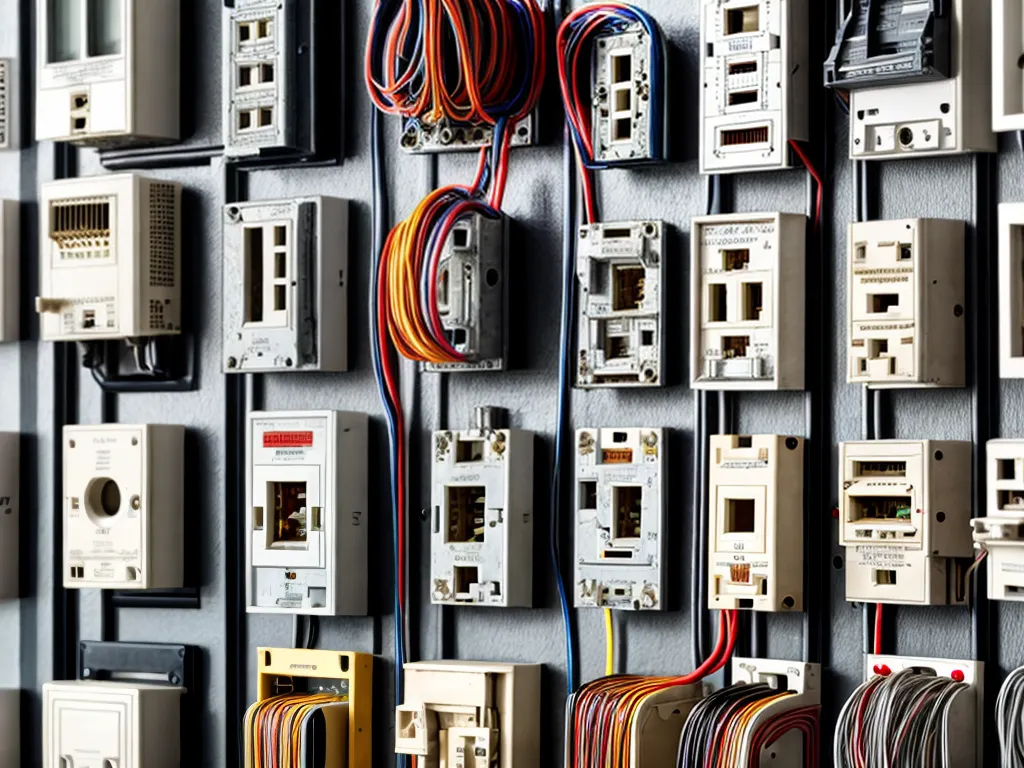
Identifying Obsolete Wiring Types in Older Homes
As a homeowner with an older house, it's important for me to be able to identify different types of obsolete wiring. Knowing the age and type of wiring in my home allows me to assess safety issues, plan for upgrades, and perform repairs. In this article, I'll provide an in-depth guide to identifying common obsolete wiring types found in older homes.
Knob and Tube Wiring
Knob and tube wiring was commonly installed in homes built before the 1940s. This type of wiring consists of individual insulated wires running through ceramic knobs and tubes.
Here are some ways to identify knob and tube wiring:
-
Exposed Wires - You may see black rubber-insulated wires running across joists, studs, and rafters. They are supported by ceramic knobs nailed to the framing.
-
Junction Boxes - Wires enter ceramic tubes at junction boxes and make 90 degree angles into the boxes. Modern wiring enters junction boxes directly.
-
Insulation Issues - Knob and tube wires lack grounding and are considered unsafe when surrounded by insulation. Check areas like attics for wiring sitting directly on top of insulation.
Safety Hazards: Knob and tube wiring lacks a ground which can lead to electrical shorts and shock risks. Insulation also retains heat on old wires which can cause fire hazards. This wiring should be replaced by a licensed electrician.
Cloth Covered Wiring
Cloth covered wiring was used in homes built from about 1920 through the 1950s. This type consists of rubber insulated wires covered in braided cloth:
-
Colors - Look for cloth covered wires in outdated colors like red, yellow, orange, and black. Modern wiring is color coded for hot, neutral and ground wires.
-
Insulation - The cloth is often frayed, cracked or deteriorated which poses fire risks. The rubber insulation underneath also becomes brittle over time.
-
Gauge - Cloth wiring is typically a smaller 14 or 16 gauge which may not safely handle modern electrical loads.
Safety Issues: The outdated small gauge and deteriorating insulation can present overheating and fire hazards. Like knob and tube wiring, cloth covered wires also lack an equipment ground.
Aluminum Wiring
Aluminum wiring was used sporadically from the late 1960s into the 1970s before being phased out. Identifying signs include:
-
Wire Color - Aluminum will be a dull gray color rather than the bright copper color of modern wiring.
-
Conductor Size - Aluminum wires are often a larger gauge than modern wires. Look for THHN wires sized at #8 or even #6 gauge.
-
Connections - Look for discolored or pitted connections at outlets, switches and light fixtures which can indicate issues with aluminum wiring.
Safety Concerns: Aluminum expands and contracts at a different rate than copper. This leads to hazardous connection failures which require special installation methods to correct.
Old Armored Cable (BX Cable)
Old BX cable has an outdated rubber and tar insulation known as a frilled paper insulation. Identifying characteristics include:
-
Age - Frilled paper BX was used from the 1920s to the 1950s. Newer BX has a plastic insulation and foil shielding.
-
Insulation Testing - The black tarred paper insulation often falls apart and crumbles when manipulated.
-
Sheathing - Look for cracked, dry and brittle rubber or cloth sheathing encasing the wires.
Hazards: This old BX cable is prone to grounded shorts, sparks and catching fire due to deterioration of the insulation. Replace older varieties with modern MC cable.
Galvanized Armored Cable (AC Cable)
Galvanized armored cable (AC) wiring was an early predecessor to modern NM (nonmetallic) cable:
-
Sheathing - Look for gray metal conduit rather than plastic or rubber insulation. The sheathing will be dull and oxidized over time.
-
Wiring - Internally the wiring will lack color coding. Older AC cable used rubber or fabric insulated wire rather than modern PVC insulated copper.
-
Age - This wiring was phased out in the 1960s so homes with galvanized AC are at least 50 years old.
Safety Issues: The sherardized steel armor can corrode over time leading to ground faults. Older rubber insulated wires also become brittle and crack. Upgrades to NM cable should be performed by an electrician.
Conclusion
Identifying and replacing obsolete electrical systems can greatly improve the safety of my home. I hope this overview gives me a better understanding of what outdated wiring to look for during inspections or repairs. Let me know if you have any other tips for identifying hazardous old wiring!